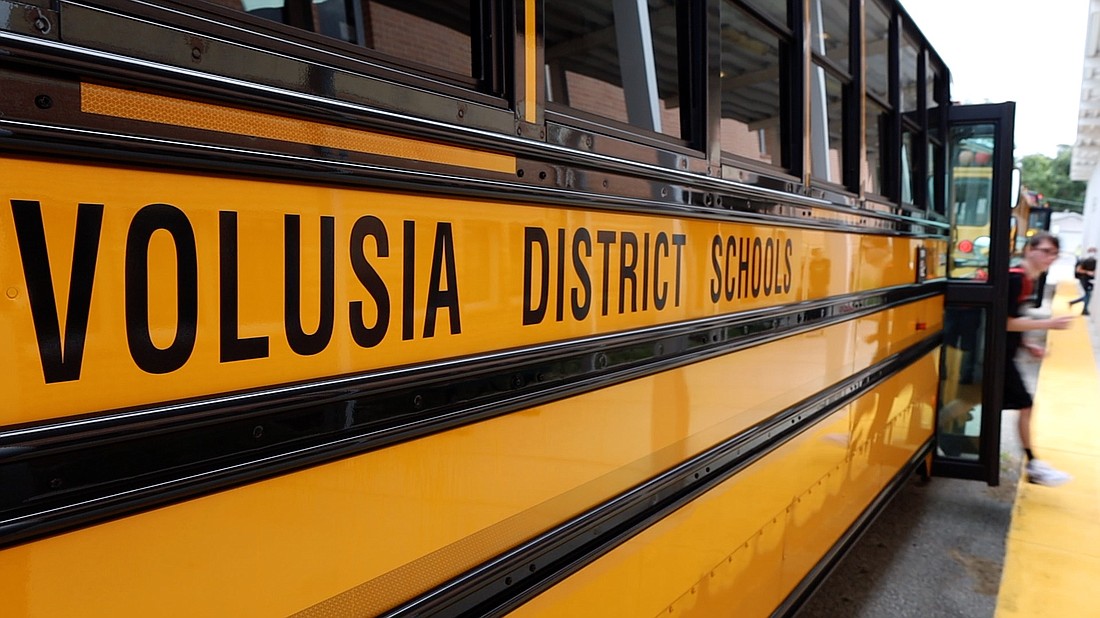- December 15, 2025

Volusia County Schools is slated to get a $43 million boost in state dollars for 2023-2024. The rise is mainly due to increases in funding for teacher salaries and student enrollment.
District staff presented the Volusia County School Board with the preliminary budget for the upcoming fiscal year on June 27.
Staff is still working on the budget, which will be presented Sept. 7, but VCS expects to receive $559.9 million from the Florida Education Finance Program. The district received $516.9 million in FEFP dollars last fiscal year.
The district also reported that its student population is expected to increase by approximately 1,261 students this upcoming school year, a 1.9% increase from 2022-2023.
Chief Financial Officer Todd Seis stressed that the numbers are preliminary.
“We know this information is going to change when we receive the tentative budget information,” Seis said. “... Every day, we’re receiving new information.”
The district initially planned to advertise a tentative millage rate of 5.48 mills, or $5.48 for every $1,000 of taxable property value. But Seis told the board that the millage rate — which is dictated by the Department of Education — will change because the taxable value has gone down.
“So what does that mean?” Seis said. “It’s going to actually change the millage rates, that will most likely have to be levied for our required local effort.”
The required local effort is the amount of money the district must provide to receive FEFP funds.
The district also reported that its Base Student Allocation is set to increase by 12% from last year because many programs have been rolled into the BSA funding umbrella. Those programs include the Teacher Classroom Supply Assistance program, instructional materials allocation, reading instructional allocation and funding compression allocation.
The BSA is projected to total $5,139.73 per student; last year, it was $4,421.79.
Two FEFP funding programs were also eliminated this year: the Florida Digital Classroom Allocation and the Funding Compression and Hold Harmless Allocation.
The Teacher Salary Increase Allocation will now be included in the total BSA.
For this upcoming school year, 1.4% of the total BSA increase will go toward salary increases for teachers, according to the district.
Programs aside, the BSA went up 2.4% — or about $110 — per student, Seis said.
School Board member Ruben Colon called the funding increase “historic,” especially in light of previous years, including a recent year in which the district’s BSA rose by less than a dollar for students.
“We’ll take it,” Colon said. “I was happy to hear we got five extra dollars, so that exceeds my expectations.”
The state also eliminated the District Cost Differential — a metric that adjusted state funding for individual school districts based on the cost of living in each — for fiscal year 2023-2024.
“That was a windfall for this district, but it was a one-time windfall,” Seis said.
At the end of the 2023-2024 school year, the district will have used all of its federal coronavirus relief dollars, known as ESSER funds. The district is now using ESSER funds for $46 million in reoccurring operating expenses. Seis said using the ESSER money was a strategic move by the district when state funding wasn’t enough to increase salaries for teachers and school staff.
“We were losing personnel,” Seis said. “We wanted to make sure we gave enough raise, increase, so we could retain those highly-effective teachers, so we were able to use ESSER to do that. But at the end, it kind of bites us a little bit, so we have to now get those positions back into the general fund.”
The district can use its fund balance to offset salary costs in the future, he added.
School Board Chair Jamie Haynes was also concerned about the Oct. 1 deadline for salary distribution plans, since the district missed last year’s deadline and had to report to the DOE.
“We seem to have fallen into a pattern here where we’re not getting our raises to people until March, April, May, June,” Haynes said. “I’d like to meet the deadline this year, if at all possible.”
Senior Editor Jarleene Almenas contributed to this story.